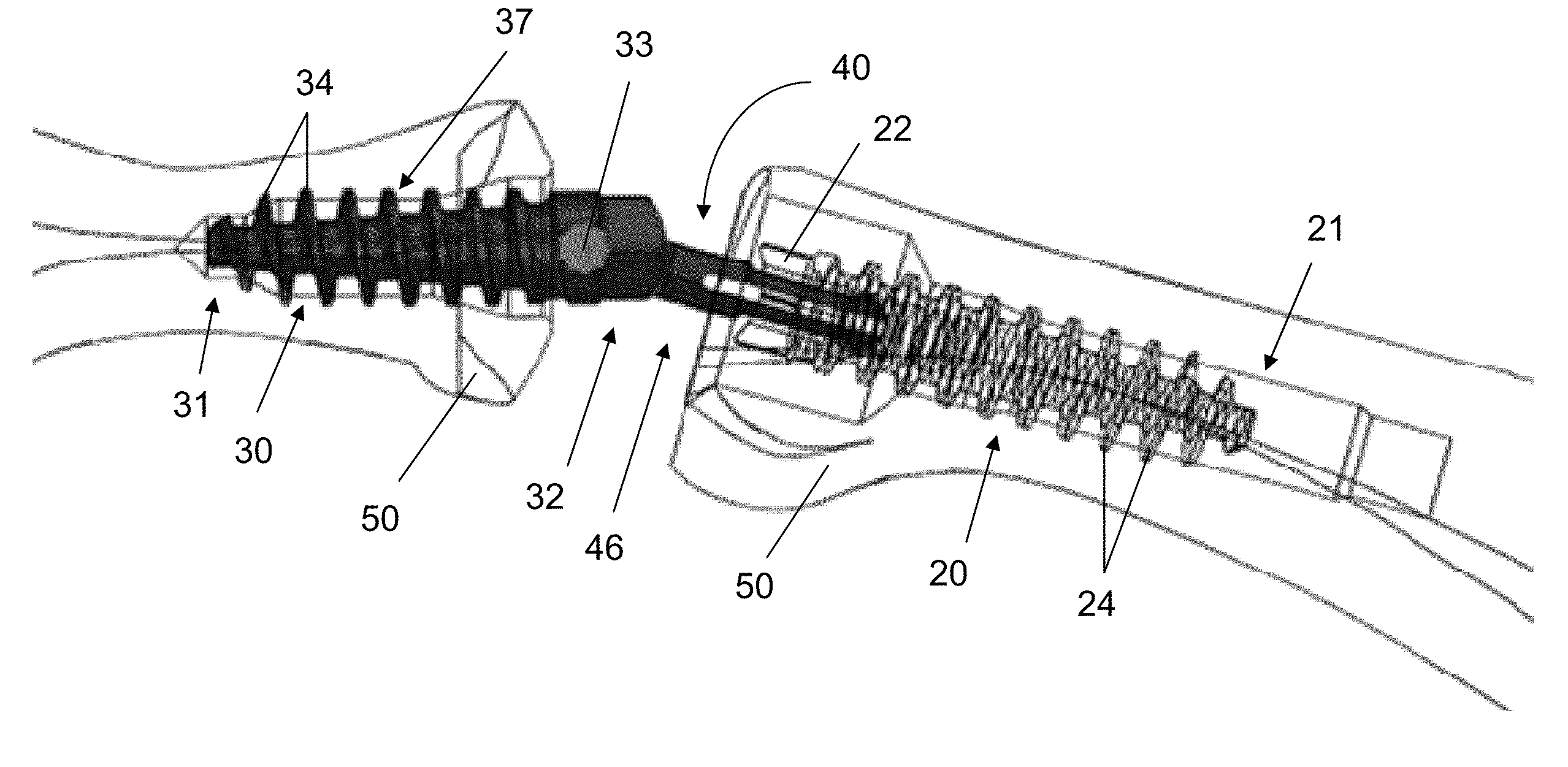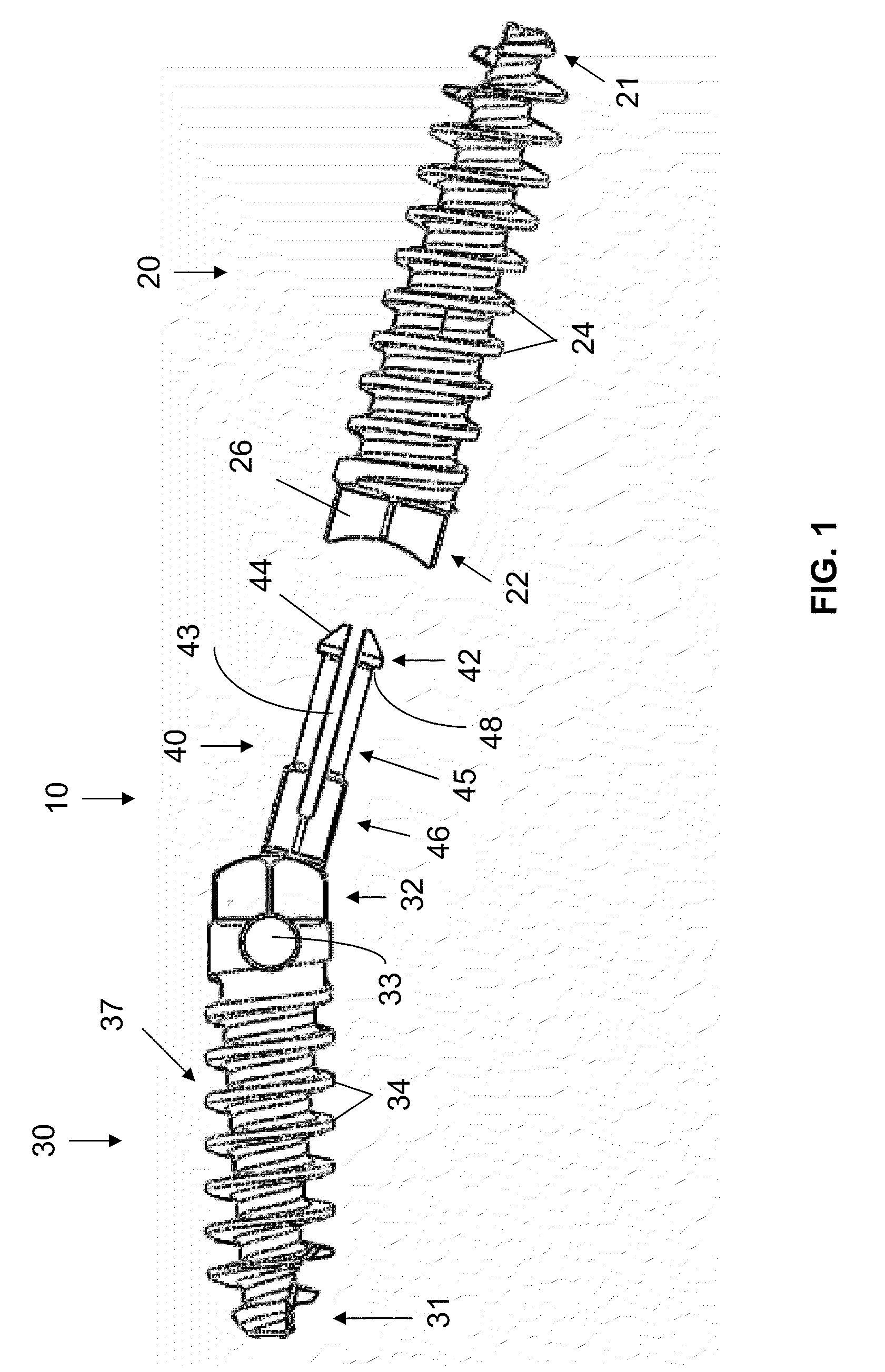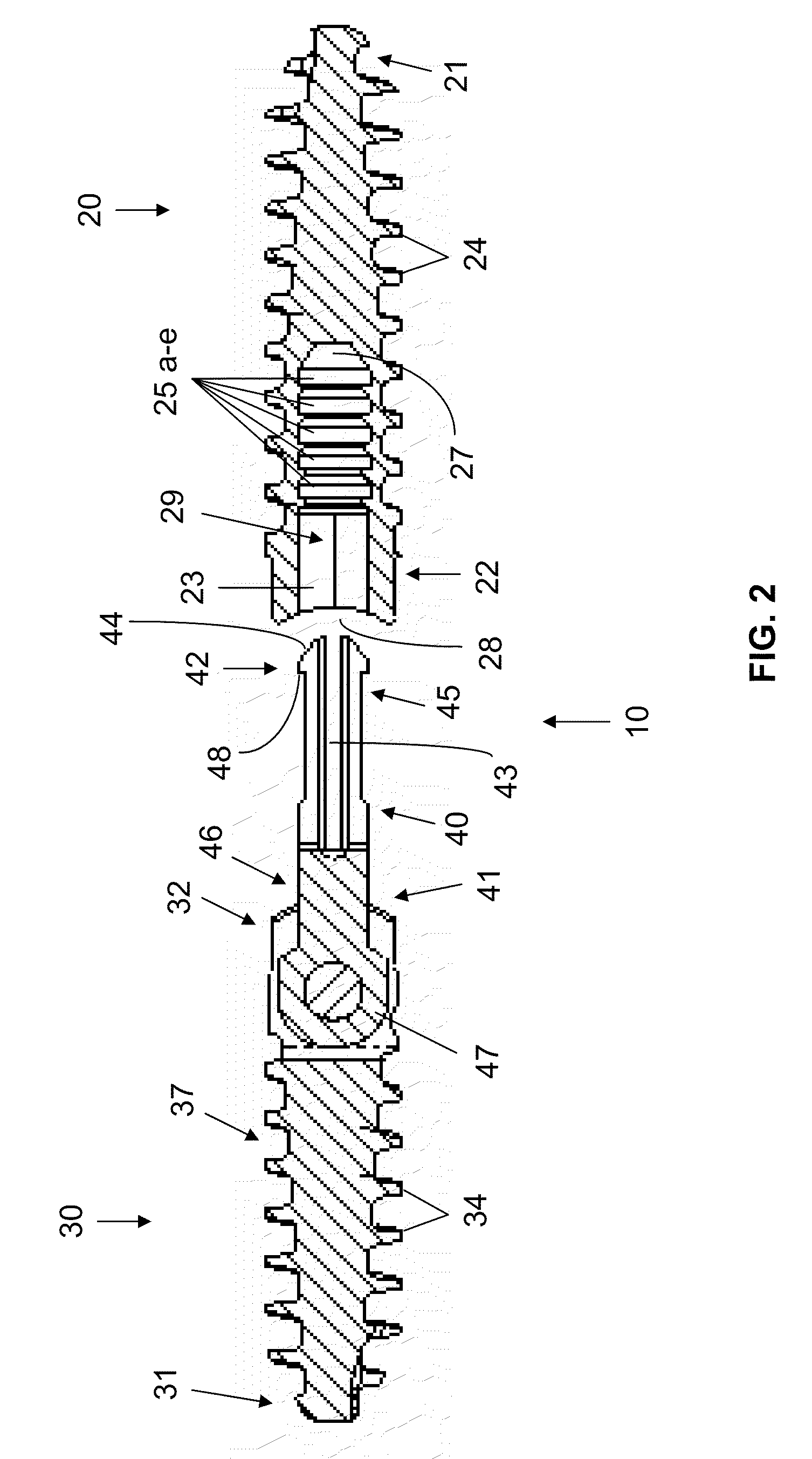Bone joining apparatus and method
a bone and joint technology, applied in the field of bone joining devices and methods, can solve the problems of pain, mtp and dip joints are often compensated for hyperextension, and often require pip fusion or joint replacemen
- Summary
- Abstract
- Description
- Claims
- Application Information
AI Technical Summary
Benefits of technology
Problems solved by technology
Method used
Image
Examples
Embodiment Construction
[0047]The inventors have developed a bone joining device that allows adjustment of the angle between the two bones to be joined.
[0048]In some embodiments, the application is directed to a bone joining device suitable for joining a first bone piece to a second bone piece. The device comprises a first component and a second component, wherein the first component comprises a first elongated stem portion comprising a first end and a first top opposite the first end, the first elongated stem portion suitable for insertion from the first end longitudinally into a surface of the first bone piece, and the second component comprises a second elongated stem portion comprising a second end and a second top, the second elongated stem portion suitable for insertion from the second end longitudinally into a surface of the second bone piece. The device further comprises a connector extending from the second top. The connector is capable of joining with the first component and locking therewith.
[00...
PUM
 Login to View More
Login to View More Abstract
Description
Claims
Application Information
 Login to View More
Login to View More - R&D
- Intellectual Property
- Life Sciences
- Materials
- Tech Scout
- Unparalleled Data Quality
- Higher Quality Content
- 60% Fewer Hallucinations
Browse by: Latest US Patents, China's latest patents, Technical Efficacy Thesaurus, Application Domain, Technology Topic, Popular Technical Reports.
© 2025 PatSnap. All rights reserved.Legal|Privacy policy|Modern Slavery Act Transparency Statement|Sitemap|About US| Contact US: help@patsnap.com



